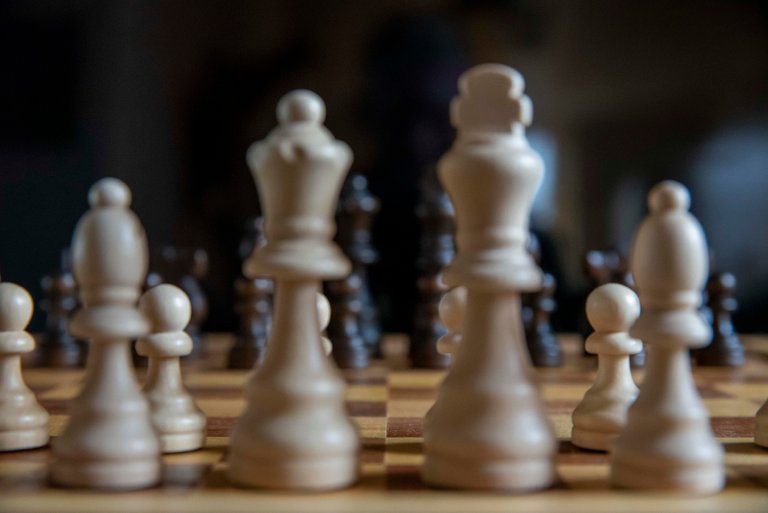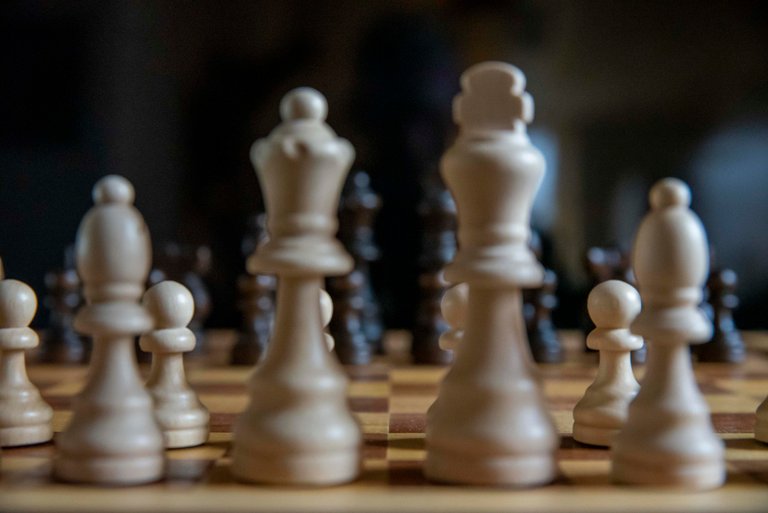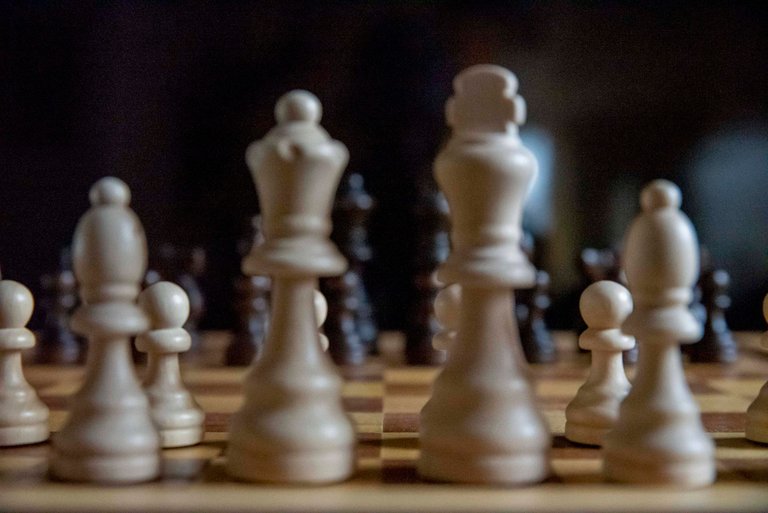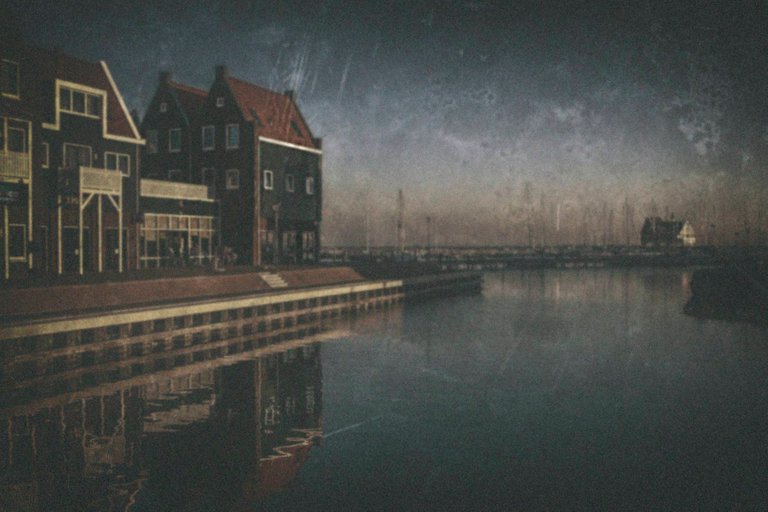
Normally I would first explain the shutter speed, but unfortunately I have not had the opportunity to take the good photos that belong to a blog about shutter speed. That is why we first discuss the ISO component. And don't think this is less important now, because together with your aperture and your shutter speed, the ISO is the closing part of the exposure triangle.
But what is ISO anyway?
Earlier in the era of analogue cameras, this was called the ASA. And the ASA was the light sensitivity of your film roll. This determined how light sensitive your film was and how you had to illuminate it. You had film rolls with different ASA values. And these different light sensitivities are still available in the digital age. Although today we usually no longer shoot with film rolls, we do everything digitally. And so you no longer determine in advance what light sensitivity you will use, as you used to do with your film rolls. The memory card on which we nowadays store our photos has no difference in light sensitivity. That is only a storage medium.
You set the light sensitivity of the sensor with ISO!
Nowadays on digital cameras, we adjust the light sensitivity of the sensor ourselves. And we do that with ISO. You increase or decrease how light sensitive the sensor is. But please note, because this is all done digitally, you have some side effects that you need to take into account, and that you have to be aware of not to be confronted with surprises later.
When noise becomes disturbing depends on various factors.
Every digital camera has a 'native ISO'. With most modern cameras this is 100, with some older cameras this is 200. To get the best image quality from your sensor it is important to take your photos with this native ISO as much as possible. But this is not always possible, and sometimes you have to raise your ISO. A high ISO has the disadvantage that you will see noise in your photos. When you are going to see this, and when you are going to find this disturbing in a photo, it depends on the camera you are taking photos with, depending on the purpose with which you are taking the photo, and depending on your personal taste.
Below I have taken the same photo few times, whereby I have raised the ISO and adjusted the shutter speed to get the same exposure. I think then it is clear what I mean by noise.
 | 100 ISO |
 | 6400 ISO |
 | 12800 ISO |
 | 51200 ISO |
Clicking on the photos to enlarge gives you the best insight into the amount of noise in the photos.
If you look closely at these photos you will see that the noise becomes more visible in each photo, until the last photo with an ISO value of 51200. This photo is actually no longer usable. I took these photos with my full-frame Nikon D750 and 51200 is the highest ISO that my camera can use. There are cameras that can handle a higher ISO value, but whether those photos can be used is another story. And so everyone with his / her own camera will have to determine to which ISO value you want / can go before you yourself say that it is no longer usable because there is just too much noise in your photo and too little detail remains.
Use noise to achieve an old look and feel.
But as always, you can also use this fact in a different way. For example, you can even use noise to your advantage again by giving the photo a different twist. If your photo is made with a high ISO value, and the photo therefore contains a lot of noise, you can always see if you can do anything else with the photo so that you can still use it. For example, you can convert a photo to black and white, or you can making it look like it's an old photo. The advantage of a photo with an old fashion look and feel is that such a photo can be grainy. Or rather, a photo with this look and feel MUST be grainy. Otherwise the effect will not look good at all.
Why does noise with high ISO arise?
The noise in a camera is the easiest to understand when you compare the camera with a microphone. If you record sound that is loud enough, you just hear the sound you want to hear. If you record sound that is very soft, and you then amplify that sound digitally, then you will also amplify all kinds of additional sounds, so that the sound you want no longer sounds clear, plus that a digital signal gives a disturbing signal. We call that noise.
In a digital camera this works about the same. If you digitally enhance the light sensitivity of your sensor, what you do if you raise the ISO. Then you also reinforce the small bumps of your camera. And no matter how good the digital cameras of today are, there are still small imperfections to be found on the sensors, you also have the so-called cosmic noise, but also the static charge of your camera and even the temperature of your sensor determine the noise. At low ISO values you will not see this at all, this is because everything in your camera is made at this low native ISO value. At this native low ISO value you can achieve the total perfection of your camera if you have properly mastered and used the lighting triangle. At high ISO values, however, you reinforce any imperfection and you see that reflected in the form of noise in your photo.
How do you recognize noise in a photo?
Noise can show itself in a photo in two ways. There is the noise that everyone knows that makes a photo grainy. But there is also the so-called color noise. This color noise is usually purple or green and can be recognized by paths that run across the photo that have a different color. A lot of noise also ensures little detail in your photo. Which is also a reason to think before you use a high ISO.
Why should I use high ISO?
Is it always true that you can never use high ISO? It is of course always best to keep the ISO of your camera as much as possible at that native ISO (100), or as close as possible to that. But of course there are always situations where you MUST raise the ISO, simply because otherwise you cannot take the picture at all.
Then there is still the difference whether you take the photo for personal purposes or for professional purposes. In the latter case I would think three times before I raised the ISO. But in the case of a photo that you take purely for yourself ... then the consideration is always a bit easier. For example, are you on vacation and just want to capture a nice memory that you can never make again afterwards Take that photo, and raise the ISO if necessary. Better a photo in your own photo archive that contains some noise, if not a photo.
In the case of the photo that is taken for professional purposes, think three times, because usually the ISO does not have to go up because there is another way to take that photo. And if it is not possible today, then it is usually possible tomorrow. Except in that case for the vacation photo you want to take on the last day ...
What is the highest ISO that you can use?
That depends entirely on what your camera can do, AND it depends on where your limit lies. When do you find the noise disturbing in the photo you take?
As is always the case in photography. YOU are the photographer, and the camera is a tool. YOU determine if and how you take the photo.
Posted via neoxian.city | The City of Neoxian

I will have to read this a few more times when I actually have my camera with me. Iso is something that I never really took the time to read about, so I shall return here when I decide to use the camera again :) thanks for this post @hetty-rowan
Posted via neoxian.city | The City of Neoxian
I've looked at the chess pieces but I hardly notice any difference
Posted via neoxian.city | The City of Neoxian
Thanks with these. I am always confused as I have a phone but cannot make a good shot with my camera but I always see my friends (with the same type of phone) getting really good shots.
Will be taking note of this post
$trdo
4.31470800 TRDO2.87647200 TRDO curation in 3 Days from Post Created Date!Congratulations @goldcoin, you successfuly trended the post shared by @neoxian-city! @neoxian-city will receive & @goldcoin will get
"Call TRDO, Your Comment Worth Something!"
To view or trade TRDO go to steem-engine.com
Join TRDO Discord Channel or Join TRDO Web Site
Thanks for elaborately described in ISO. Waiting for your next post regarding ISO, shutter speed and aperture value options..
This is the best expansion I have seen of the ISO configuration. Specially in regards to it's origin in film rolls.
Thank you for sharing with us.
Love this. With so many people taking photos is a quick and easy explanation. Awesome work.
Nice sharing. Thank you 🙂👍
Posted using Partiko iOS
4.314708 TRDO from below listed TRENDO callers:
Congratulations @neoxian-city, your post successfully recieved
To view or trade TRDO go to steem-engine.com
Join TRDO Discord Channel or Join TRDO Web Site